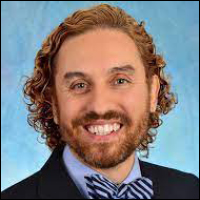- Membership & Community
-
Publications & News
- Journals
-
Newsroom
-
The Physiologist Magazine
- 2019
- 2020
- 2021
- 2022
- 2023
- 2024
- In Depth
-
Mentoring Forum
- Net Worth
- Take Care
- You … In Charge
- Work. It. Out.
- Working Off-site
- Location, Location, Location?
- Student Support
- Progressing to Postdoc
- Relationship Building
- Let’s Get It Started
- What Do We Value?
- It’s a Postdoc Life
- Coronavirus Contributions
- Creative Communications
- Selection Process
- Conference Connections
- Postdoc Appreciation
- Research Rewards
- Focus on Teaching
- Industry Insights
- Balance Beam
- Post Postdoc
- If You Build It
- Talk It Through
- Forward Bound
- I’ve Earned My PhD. Now What?
- University Life
- Tips for Trainees
- Time Travel
- Policy IQ
- Publish with Polish
- Under the Microscope
- Mentoring Q&A
- The Physiologist Magazine Readers Survey
- Evolution
- Baseline by Scott Steen, CAE, FASAE
- Find Us on Social Media
-
The Physiologist Magazine
-
Professional Development
-
Meetings & Events
-
American Physiology Summit
- #APS2024 Overview
- Abstracts
- Awards at the Summit
- Award Lectures
- Career Networking Lunch Form
- Dates and Deadlines
- Hotel Information
- Industry Partners
- Keynote Speaker—Brian Kobilka, MD
- Keynote Speaker—Jessica Meir, PhD
- Mobile App
- NIH and NSF Program Officer Panel Discussion Form
- Off-site Summit Meetups
- Physical Poster Information
- PhysioHub
- Pre-Summit Events
- Registration
- Section & Group Banquet Tickets
- Speaker Audiovisual Instructions
- Summit FAQs
- Summit Newsroom
- Summit Store
- Travel & Transportation
- Undergraduate Program Book
- Liability Waiver
- Summit Call for Proposals
- Industry Partners
- Martin Frank Diversity Travel Award Orientation Agenda
- Martin Frank Diversity Travel Award Networking Luncheon Agenda
- Women in Physiology Networking Event Agenda
-
2023
- APS 2023 Call for Proposals
- Shocklogic Test
- Team 2023 Task Force
- Shaping the Summit
- Schedule at a Glance
- Pre-Summit Events
- Pre-Summit Center for Physiology Education Workshop Registration
- Section & Groups Banquet Tickets
- Summit Store
- Pre-Summit Center for Physiology Education Workshop
- Press Registration
- Meet the Organizers
- Keynote Speaker—Terrie Williams, PhD
- Keynote Speaker—David Julius, PhD
- Industry Workshop Information
- Important Dates and Deadlines
- Hotel Information
- Game Changers
- Distinguished Lecturers
- Building APS 2023
- Awards at the Summit
- 2023 Summit Information
- American Physiology Summit Program
- 2023 Summit Newsroom
- 2024
- Scientific Integrity Policy
- From Concept to Classroom
- Webinars
- Related Meetings
- Future APS Conferences
-
Past APS Conferences
- APS Institute on Teaching and Learning
- Integrative Physiology of Exercise
- Seventeenth International Conference on Endothelin (ET-17)
- New Trends in Sex and Gender Medicine
- APS Institute on Teaching and Learning (2022)
- Control of Renal Function in Health and Disease Conference
- Comparative Physiology: From Organisms to Omics in an Uncertain World
- Conference Policies
-
American Physiology Summit
- Awards
-
Career & Professional Development
-
Career Gateway
-
Resources
- Transcript—Leading Through Conflict and Difficult Conversations
- Transcript—Managing Conflict with Colleagues
- Transcript—Leading a Team Through Conflict
- Transcript—Providing Difficult Feedback
- Transcript—Team Dynamics and Culture Primer
- Transcript—Building a Team
- Transcript—Leading a Team Assigned to You
- Transcript—Creating a Team Culture
-
Resources
- Career Navigator
- Center for Physiology Education
- Job Board
- Mentoring
- APS Graduate Physiology & Biomedical Science Catalog
-
Career Gateway
-
Meetings & Events
-
Advocacy & Resources
- Policy Areas
-
Resources
- Researcher Resources
- Educator Resources
- Trainee Resources
- Student Resources
-
APS Graduate Physiology & Biomedical Science Catalog
- Augusta University
- Des Moines University
- East Tennessee State University
- George Washington University
- Louisiana State University Health Sciences Center Shreveport
- Mayo Clinic Graduate School of Biomedical Sciences—Biomedical Engineering & Physiology
- Medical College of Wisconsin
- Michigan State University
- New York Medical College
- Nova Southeastern University
- Pennsylvania State University
- Saint Louis University
- Texas A&M University
- Texas A&M University Medical Physiology
- Stony Brook University
- The University of Iowa
- The University of Mississippi Medical Center
- University of Alabama at Birmingham
- University at Buffalo
- University of Colorado
- University of Delaware
- University of Florida
- University of Louisville
- University of Michigan
- University of Minnesota
- University of Missouri-Biomedical Sciences
- University of Nebraska Medical Center
- University of Oregon
- University of South Carolina School of Medicine
- University of Tennessee Health Science Center (UTHSC)
- University of Texas Health Science Center
- Virginia Commonwealth University
- Wayne State University
- Wake Forest University
- Physiology Department Catalog Submission Form
- Career Gateway
- Diversity, Equity & Inclusion
- Advocacy
- About APS
- Nonmembers
- $0.00
- Members
- $0.00
July 29, 2021
11 a.m. EDT
Cardiovascular disease is the leading cause of death and disability in the world. Severe, symptomatic atherosclerosis is treated by percutaneous or surgical revascularization, and arterial restenosis limits the long-term success of both approaches. Despite advances in revascularization procedures, restenosis rates remain unacceptably high. Strategies to inhibit restenosis aim at reducing neointimal hyperplasia by inhibiting vascular smooth muscle cell proliferation and migration. Since increased production of reactive oxygen species promotes vascular smooth muscle cell proliferation and migration, redox intervention to maintain vascular wall redox homeostasis holds the potential to inhibit arterial restenosis. Restoring the redox balance by activating nuclear factor erythroid 2-related factor 2 (Nrf2), the main antioxidant defense pathway present in our cells, is novel treatment.
Standard methodology for the analysis of vascular injury has historically relied on 2D histology. However, it is subject to shortcomings of 2D systems and significant user bias. In this webinar, Edward Bahnson, PhD, of the University of North Carolina at Chapel Hill, will discuss the development and validation of a methodological approach utilizing light sheet fluorescence microscopy (LSFM) for 3D imaging of preclinical vascular injury models. This approach minimizes analysis bias while increasing precision and reproducibility. Bahnson will use his studies on the mechanisms by which cinnamic aldehyde inhibits neointimal hyperplasia to demonstrate the application of this 3D approach to arterial injury analysis. He will show how LSFM shows a full picture of the hyperplastic lesion and allows for the assessment of its topology and compensatory and constrictive remodeling. Bahnson will also discuss the ability of LSFM to multiplex, assess infiltration of immune cells and analyze endothelial layer integrity.
Key topics include:
- Local delivery of redox-based therapies can inhibit restenosis and have the potential to improve revascularization outcomes;
- 3D analysis of arterial injury offers advantages over traditional 2D histology, including:
- unbiased determination of the region of injury and increased precision;
- measurement of more parameters of arterial injury; and
- potential for discovery; and
- Cinnamic aldehyde inhibits hyperplasia in a Nrf2-dependent manner.
Speaker:
 Edward Moreira Bahnson, PhD, an assistant Professor at the University of North Carolina (UNC) at Chapel Hill, received a BSc in Biochemistry from the University of Uruguay, and moved to the U.S. to pursue his doctorate. He received his PhD in Biomedical Sciences from Kent State University in Ohio, studying no-coenzyme effects of vitamin B12 in vascular cells. Bahnson’s research program at UNC focuses on the study of vascular disease and developing of targeted delivery of therapeutics for the vasculature. To study vascular injury, he developed a novel technique using light sheet florescent microscopy (LSFM), which allows for unbiased and precise analysis of the arterial injury response in 3D. Bahnson holds two U.S. patents for his work.
Edward Moreira Bahnson, PhD, an assistant Professor at the University of North Carolina (UNC) at Chapel Hill, received a BSc in Biochemistry from the University of Uruguay, and moved to the U.S. to pursue his doctorate. He received his PhD in Biomedical Sciences from Kent State University in Ohio, studying no-coenzyme effects of vitamin B12 in vascular cells. Bahnson’s research program at UNC focuses on the study of vascular disease and developing of targeted delivery of therapeutics for the vasculature. To study vascular injury, he developed a novel technique using light sheet florescent microscopy (LSFM), which allows for unbiased and precise analysis of the arterial injury response in 3D. Bahnson holds two U.S. patents for his work.
Bahnson is involved in many diversity, equity and inclusion (DEI) efforts. He is chair of the Provost’s Committee on LGBTQ Life and chair the DEI committee of the Society for Redox Biology and Medicine; and co-founder and faculty advisor to STEM Pride of the Triangle. Bahnson is a trained Safe-Zone facilitator and co-developer of the Safe-Zone training for STEM professionals and a member of the Society for Advancement of Chicanos/Hispanics and Native Americans in Science chapter at UNC.


